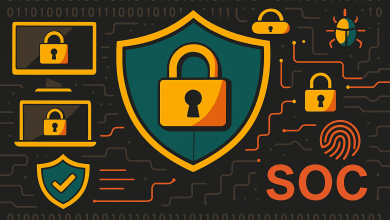SaaS businesses ship changes daily, expand APIs, and integrate with third parties. Attackers follow that surface. The latest industry studies show breach costs remain high, with a global average around USD 4.44 million in 2025, and even higher in the United States. Faster identification and containment correlate with lower losses, which is exactly what proactive testing enables.
Web application and API weaknesses still dominate breach patterns. The 2025 DBIR highlights basic web application attacks and stolen credentials as persistent drivers, which pentests are designed to uncover through controlled exploitation.
AI is also changing risk. IBM’s 2025 research notes material incidents from shadow AI and compromised plug ins, adding hundreds of thousands of dollars per breach. Pentests and targeted adversary emulation can validate controls around model and plugin access in real environments.
For buyers comparing options or methods, see this industry analysis,
top penetration testing companies, and align it to your sprint rhythm with developer ready reporting
What “good” looks like, scope and methodology that work for SaaS
Authoritative frameworks help structure high value testing.
- NIST SP 800 115 explains how to plan and conduct technical security testing with clear phases, from discovery to reporting. Use it to anchor expectations with vendors and internal stakeholders.
- OWASP ASVS and Top 10 provide concrete requirements and common risks for web and API layers. Use ASVS as a coverage checklist and WSTG for test ideas, rather than relying only on Top 10 labels.
- MITRE ATT&CK for Cloud helps map findings and detection gaps across SaaS, Office 365, and identity planes. This turns a pentest from a point in time report into improvements for SOC content and engineering backlogs.
If you want vendor fit plus methodology patterns in one place, this roundup helps for hands on scope templates, see penetration testing services.
Cadence, KPIs, and tying pentests into DevSecOps
Pentests should match your change velocity. Use this cadence as a starting point for SaaS:
- Quarterly focused pentests on your most active services and public APIs.
- Pre release pentest for major launches or architecture shifts.
- After major incidents or material dependency changes.
Track these KPIs to prove value:
- Mean time to remediate high risk findings
- Percent of criticals closed and verified by retest
- Reduction in exposed attack paths mapped to ATT&CK
- Detection coverage for tested techniques where logging exists
CISA’s playbooks and risk assessments reinforce the loop between discovery, response, and hardening. Pair pentest outputs with detection and IR playbook updates to shorten containment time.
Compliance signals without cargo cults
Regular pentesting is not a silver bullet for compliance, yet it provides strong evidence for auditors.
- SOC 2: While not prescriptive about pentesting, periodic testing demonstrates control effectiveness for the Security Trust Services Criteria. Reports often reference it as a detective control.
- ISO 27001 and 27002: Testing supports Annex A control verification, and 27002 maps relevant safeguards for secure development and vulnerability management. Use pentest results to show your ISMS is effective, not just documented.
What to include in a SaaS pentest, a practical scope
Focus on the parts of your stack attackers touch most:
- External attack surface: domains, subdomains, WAF rules, misconfigured cloud services
- Authentication and sessions: SSO flows, MFA bypass, OAuth grants, token handling
- Authorization: object level authorization in REST and GraphQL, role escalation, multi tenant isolation
- Business logic and abuse: metered features, credits, billing and plan switching
- APIs: undocumented endpoints, mass assignment, broken function level auth
- Supply chain and AI extensions: marketplace apps, plugins, LLM prompts and tools, outbound webhooks
Map each area back to ASVS sections and record telemetry to feed detections.
Frequency and cost, how to right size your program
Start with a baseline pentest for your core app and identity plane. Then run smaller, targeted pentests quarterly for the most changed services. Reserve an annual full scope for deep coverage. This aligns with breach data that shows rapid containment lowers impact, so keep cycles tight and iterate.
Budget signals to consider:
- Depth over breadth for crown jewel services
- Include retesting in contracts, measure fix verification
- Add adversary simulation on identity and SaaS integrations where feasible, guided by ATT&CK Cloud.
Reporting that developers and leaders can act on
Great pentest reports share traits:
- Exploit evidence with step by step reproduction and safe proof of impact
- Root cause analysis tied to code, config, or process gaps
- Clear remediation with references to ASVS, libraries, and secure patterns
- Retest results that close the loop and show risk reduction over time
These elements map cleanly to audit narratives and ISMS continuous improvement cycles.
FAQs
How often should a SaaS company run a pentest?
Quarterly on high change assets, pre release for major launches, and annually for a full scope. This supports faster containment and aligns with modern breach data. I
Do pentests replace bug bounties or scanners?
No. Pentests provide structured, risk focused exploitation by experts. Use them with SAST, DAST, and optional bounty programs for continuous coverage.
Which standards should my team reference?
Use NIST SP 800 115 for process, OWASP ASVS and WSTG for coverage, and ATT&CK for mapping technique level gaps.
Will pentests help with SOC 2 and ISO 27001?
Yes. They provide evidence of control effectiveness and continuous improvement for auditors, even if not mandated verbatim.



